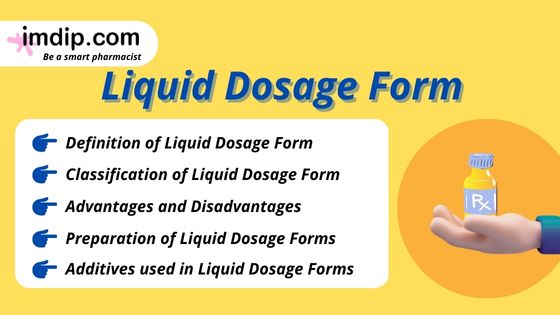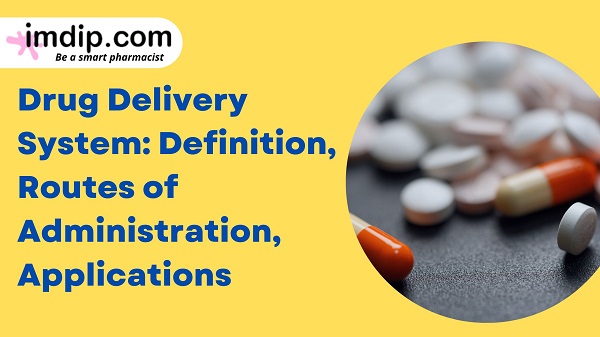Liquid Dosage Forms are useful because some people have the problem of swallowing solid dosage forms.
For the preparation of liquid dosage form, a lot of additive ingredients are needed. Such as vehicles, stabilizers, preservatives, suspending agents, emulsifying agents, solubilizers, colors, flavors, etc.
So now I’m going to discuss all the information in the very easiest way. There are various types of liquid dosage forms like syrup, suspension, ear drop, eye drop, etc.
Liquid dosage form | Definition, classification, advantage, disadvantage, preparation, additives ingredients.

Definition of liquid dosage form:
The liquid form of a drug dose for administration or consumption. Route of administration may be oral, intravenous, intramuscular, cutaneous, subcutaneous, etc.There are different types of dosage forms.
1. Solid dosage form,
2. Liquid dosage form,
3. Semi-solid dosage form,
4. Gas dosage form.
Classification of liquid dosage form:
Basically, liquid dosage forms are divided into two parts according to phase.
Monophasic liquid dosage form: Monophasic means only one phase is there. That is the liquid phase.
- Internal Use- Syrup, mixture, linctuses, elixirs, parenteral preparations.
- External use- Gargle, mouthwash, lotions, nasal drops, eardrops.
Biphasic liquid dosage form: Biphasic means two phases are there. That is a solid phase and a liquid phase.
Advantages and disadvantages of the liquid dosage form:
Advantages:
- Very useful for those patients who have trouble swallowing.
- The rate of absorption of the liquid dosage form is so faster than the solid dosage form.
- Liquid dosage forms are flexible to take a proper those than solid dose.
Disadvantages:
- It needs a lot of special storage conditions.
- Affected by microorganisms: Due to the presence of sweetening and flavoring agents.
- Less stable than other doses.
- The problem of container breakage.
Types of additives used in the liquid dosage forms:
For the preparation of a liquid dosage form, we need a lot of additive materials. These materials are known as Active Pharmaceutical Ingredients (APIs).Vehicles:
Vehicles are those materials that are chemically inert and don't have any therapeutic value. But these are used in the formulation of liquid dosage forms to improve the stability, patient acceptability, and function of the dosage form.Examples of aqueous vehicles are water, glycerin, alcohol, etc.
Examples of oily vehicles are vegetable oils and mineral oils.
Stabilizers:
Stabilizers are those materials used to increase the stability of a material or formulation by preventing degradation of the product.According to the material, it varies.
Preservatives:
Preservatives are those ingredients used for the preservation or for the protection of the formulation from the attack of microorganisms.
Examples of preservatives: benzoic acid, sorbic acid, sodium benzoate.
Suspending Agents:
Suspending agents are those excipients, which are useful to help active pharmaceutical ingredients to stay suspended into the formulation and prevent the cake formation under the container of the formulation.Suspending agents are used in the preparation of the suspension.
Emulsifying Agents:
Emulsifying agents are those surface-active ingredients used in the formation of the emulsion. It's useful to adsorb the water-oil droplet interface.Examples of emulsifying agents: Gum acacia, Tragacanth.
Solubilizers:
Solubilizers are materials used to increase the solubility of a material and improve bioavailability.Example of solubilizers: Polysorbate.
Coloring agents:
Colouring agents are used in the liquid dosage form to improve the acceptance of consumers.Examples of natural colors: Titanium dioxide, carotene, ferric oxide, etc.
Examples of Synthetic colors: Erythrosine, Tetrazine, etc.
Related article for you:
Flavoring Agents:
Flavoring agents are used to overcome the unpleasant smell of a formulation.Examples of flavoring agents: Apple, ginger, clove, rose, etc.
Sweetening Agents:
Sweetening agents are used to overcome the unpleasant taste of the formulation.Examples of sweetening agents: Sucrose, fructose, saccharine, sorbitol.
Related Articles























.png)
